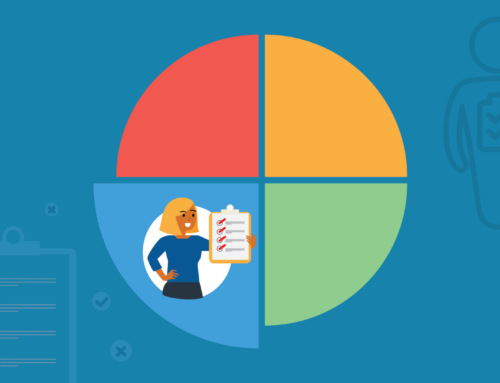In any good team, there needs to be a good balance of personality styles.
Think about the Avengers: there’s assertive and competitive Thor, the powerful God of Thunder who undoubtedly has the Dominance DISC Profile. There’s loyal Captain America, a textbook Steadiness DISC type due to the way he values security and stability. Attention-loving Iron Man is a classic Influence type, bringing the team together with his enthusiasm and people skills. And finally, cautious and calculating Dr Strange is an obvious example of the Compliance DISC profile.
The Avengers simply couldn’t work if everyone was like Thor; a balance of personalities is crucial to allow each person’s strengths to shine and their limitations to be overcome.
With that in mind, you might be wondering which combinations of DISC profiles tend to create the best and most cohesive teams. In this article, we’ll take a look at some of the best DISC pairings for productive and effective work.
But before we explore some of the most productive working relationships between DISC profiles, here’s a quick recap of the characteristics, strengths, and limitations of each personality.
Dominance
People with the Dominance type are risk-takers, straight-talkers, and go-getters. D styles know what they want and how to get it. Often, they may consider themselves born leaders, preferring to focus on the big picture stuff while delegating the finer details to other individuals on their team. D types don’t mind changing course or tactics in order to see results and they have no problem taking calculated risks. Assertiveness and competitiveness are common among high D types. When it works out, they love the success and higher status afforded to them. When it doesn’t, they don’t mind changing the plan and trying again.
Complementary profiles to work with: Steadiness and Compliance
Influence
Influence types bring the energy to the team. Enthusiastic and talkative, they are good at motivating everyone around them and sharing their positive viewpoint. I style individuals are people-focused, enjoying building positive working relationships and collaborating with those around them in order to achieve great things. Sometimes they may lack organisation and focus or be overly optimistic about their team’s capabilities, but for the most part they are effective team members who encourage everyone around them to work hard.
Complementary profiles to work with: Compliance and Steadiness
Steadiness
The backbone of any team, people with the Steadiness DISC profile are reliable and supportive. They tend to be good listeners who are genuinely interested in the views and perspectives of those around them. They value democracy and have an agreeable nature which can sometimes lead to them holding their tongue if they have a problem, not wanting to upset anyone or challenge the status quo. Preferring a harmonious and consistent work environment, S style people can be resistant to change and it can take a while for them to become accustomed to new ways of working.
Complementary profiles to work with: Dominance and Influence
Compliance
Compliance personality types are competent and independent, preferring to work alone in order to deliver impressive and accurate results. They have a methodical and analytical approach to problems, doing careful research and comparing options before coming to conclusions. However, the skills of C style individuals can be hampered by their worries about getting things wrong or not delivering perfection. To perform their best, Compliance types often need to overcome perfectionism and learn to collaborate or delegate in order to get things done.
Complementary profiles to work with: Influence and Steadiness
How does the DISC assessment work?
Based on the theories of psychologist William Moulton Marston, the modern DISC assessment is a quick and easy task where individuals select the statements that they feel are most and least applicable to themselves. The results of the assessment identify the four personality types, although many people fit into more than one personality and are instead a mix of two. The assessment is popular in many workplaces, with over a million people undertaking it and finding out their DISC profile every year.
To learn more about the DISC assessment, read our article here.
Productive DISC relationships
Dominance & Steadiness
Dominance and Steadiness are considered to be ‘opposite’ DISC types: while D types are outgoing, active, and task-oriented, S types tend to be reserved, reflective, and people-oriented. But, as they say, opposites attract!
Although it may take some time for D and S style individuals to understand the other person’s behaviours, communication styles, and leadership styles, with some effort on both sides these two personality types can become a highly effective partnership. This is because their skills and behaviours can perfectly complement each others’ limitations, creating a strong team. Let’s look at some examples:
Decision-making
While D styles love making quick decisions and taking risks, S types are far more risk-averse and resistant to change. By working together, Dominance types can encourage S types to see the value in challenging the status quo, bringing more innovation and outside-the-box thinking to their shared projects. On the other hand, Steadiness types can complement this by helping D types better anticipate the consequences of their decisions and influencing them to consider how this may impact others.
Communication
Although at first glance D types and S types may exhibit very different styles of communication, both can learn and grow from the other’s. Dominance DISC types tend to be more direct and assertive, sometimes showing impatience for others who are not as straight-talking as they are. In contrast, Steadiness types sometimes value harmony and conformity to a fault, preferring to keep silent instead of causing conflict with their differing opinions.
Without mutual understanding, this can sometimes lead to D personality types taking advantage of S styles’ unwillingness to voice differing opinions. However, a D and S work relationship with a good understanding of DISC can result in both individuals learning to understand the other’s style and communicate more effectively with everyone as a result.
Influence & Compliance
Another opposites attract scenario, Influence and Compliance have many differences but can work effectively together if they have a good understanding of DISC. While I styles are people-oriented and active, C styles are task-oriented and reflective, meaning that both bring different and valuable perspectives to any team. Let’s look at some examples of ways they can work well together.
Project work
I and C profiles can be a powerful team when working on projects together due to the complementary nature of their behaviours. While I types are good at starting projects, motivating the other people on their team, and thinking positively about the task at hand, they may sometimes struggle with organisation or completing tasks. That’s where C types step in; their ability to focus on the finer details, do extensive research, and bring a methodical approach to tasks is a great way to ensure that a project’s momentum continues to move forward.
Presentations and negotiations
Another situation in which the value of an I and C pairing is clear is in presentations or negotiations. While Compliance types are independent workers with a knack for doing accurate and effective work, they are often more reserved and may struggle to communicate the importance of this work to others. They may tend to focus too much on the details and ignore the bigger picture, and sometimes their worries about getting the task right or perfect can get in the way of their enthusiasm about it.
Fortunately, I types thrive in situations where they can talk to people and use their persuasive and social skills to get the right information across. Their energetic nature can drum up enthusiasm for the project or deal and their ability to look at the big picture is also valuable in this scenario. Together, I and C personality types are often far more effective than they could be alone.
Final thoughts
While we’ve only looked in detail at a few specific DISC relationships, there are a wide range of pairings that can be highly productive and effective in a workplace setting.
However, it’s important to note that a good understanding of DISC is essential to achieve the best collaboration possible. Without this training, people with different personalities may struggle to understand how best to communicate with or lead the other profiles in the workplace.
To delve deeper into the personality and behavioural styles of a particular team, why not use DISC Group’s supplementary DISC Flow® GROUP Report? When combined with a regular individual DISC assessment, this report provides powerful insights into the personalities and emotional intelligence within a team. By understanding the group’s characteristics, strengths, and limitations, the team members can become more engaged, understanding, and effective.
To find out more about how DISC assessments can unlock the potential of your teams, contact us today.





